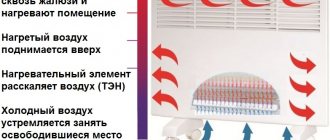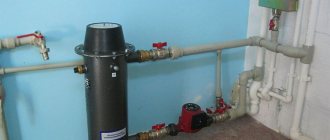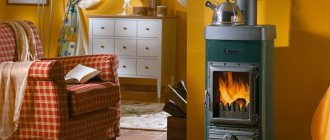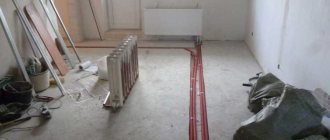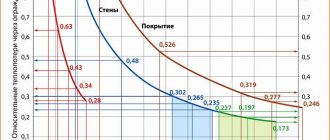Do you have your own home and want to understand how to heat it most expediently, economically and safely? Most often, to solve these problems, the option with electricity is chosen. However, choice is a complex process, so when organizing a system, you often have to consider many options. The most common of them:
- Turn out the oven. But this involves a lot of related worries (firewood, cleaning the chimney, etc.).
- Gas heating. It is environmentally friendly, convenient, there are almost no associated worries, but in order to supply gas to the house, it is necessary to make a project to supply gas to the house, which will entail large costs.
- Heating systems operating on flammable substances. It is necessary to purchase fuel and periodically clean the fires. Difficulty can also arise if you do not live in the house all the time, but only in the spring and autumn. Controlling heating in winter becomes problematic.
- There is only one thing left - heating a country house with electricity. Electric convectors are environmentally friendly, very simple and there are no associated worries. In addition, there are systems available for remote control of heaters.
Advantages of using electric convectors for heating a home
Convector heating of a house is not only the simplest, but also the most cost-effective option.
With this type of room heating, there is no need to spend money on purchasing additional equipment or paying for the work of specialists to install a complex system. The convector does not require either pipe laying or installation and adjustment of the heating boiler - you just need to attach it to the installation site using special parts. Using a convector to heat a private house, it is also possible to almost completely eliminate heat loss, which is impossible when using a heating boiler or pipes. This is achieved due to the fact that in an electric convector all heating elements are located inside the housing.
Other advantages of convectors include high efficiency, fast heating speed and fairly accurate maintenance of the set temperature in the room. Electronically controlled convectors help reduce energy consumption.
Heating with electric convectors
It should be noted that heating a private house with electric convectors will withdraw significant amounts from the household budget every month. They resort to it, as a rule, when it is impossible to organize heating with a gas boiler or with electricity, but using a coolant, as well as more cost-effective methods of electric heating. These include: film heated floors or heat pumps.
In particular, this type of maintaining comfortable temperatures can be a temporary solution, since its arrangement does not require much time or special skills.
The only obligatory condition is the presence of a connection to the power grid and reliable wiring in the house that can withstand the loads of heating consumers. One of the disadvantages of heating using electric convectors is the low inertia of this method. An emergency disconnection from the network will quickly lead to a cooling of the temperature in the premises. To minimize energy consumption, stationary convector heating is equipped with additional control devices. For this purpose, weekly programmers are used, which take over control from the thermostatic regulators of electric convectors. The programmer allows you to reduce the temperature maintained in the house when its residents are absent. And half an hour before arrival, pump up a comfortable 20-22 degrees Celsius. At night, the temperature drops slightly lower without compromising comfort.
How to calculate the required number of devices
As a rule, to calculate the power and number of devices required to heat a room, a formula is used based on 100 W per 1 sq.
m. For example, for a room of 15 square meters. m requires equipment with a power of 1.5 kW. It is best to install convectors under the window - 1 convector for each of them. This will allow you to heat the room with maximum efficiency. Accordingly, for a room of 15 square meters. m and three windows, it is best to purchase 3 convectors with a power of 0.5 kW each and install them under the windows to prevent the penetration of cold air into the room.
Electricity consumption calculation
A significant drawback when organizing home heating using this method is the monthly payments for electricity.
To preliminarily calculate how much the coziness and comfort in the premises and the energy consumption for heating the house will cost, it is enough to use an empirical formula and an approximate calculation of the power of electric heaters required to heat the rooms. Modern electric convectors for heating a private home are produced by manufacturers in a certain gradation of power. These are mainly models with productivity: 0.5 kW, 1 kW, 1.25-1.5 kW and 2 kW. Approximately 1 kW of the declared rated power of the device provides effective heating of a room with a conventional area of 10 square meters. meters and up to 3 meters high.
As an example, let’s calculate the consumed volumes of electricity in a conventional house. The minimum housing includes: a corridor (5 sq. m.) and a combined bathroom (5 sq. m.), a living room (20 sq. m.) and a kitchen-dining room (12 sq. m.), a bedroom (10 sq. m.) and a children's room ( 12 sq. m). By adding and converting proportionally, we find that housing with an area of 65-70 sq. meters requires a total consumer power of 7 kW. The empirical formula assumes that the consumption of heaters per hour is equal to half the maximum power. Multiplying the resulting number by 24 hours, and then by 30 days of the month, we find that 2.5 thousand kW must be paid per month. Thus, heating rooms using electrical energy in convectors is an environmentally friendly type of heating, but with high monthly costs for electricity.
Electricity costs
It is not difficult to calculate the approximate financial costs of heating a country house with an electric convector if you know the total power of all devices (provided that more than one device is used), as well as the cost of 1 kW according to the current tariff.
It is worth considering that the convector does not work constantly - it turns off when the set temperature values are reached, and turns on again when the air temperature in the room drops. Therefore, the final amount will be significantly lower. These are, of course, approximate calculations, since the operation of the device is also influenced by many nuances that are difficult to calculate in advance.
How to choose an electric convector for your home?
It is necessary to select a device in accordance with the size of the room and the climatic conditions of the place where the house is located. If your house has good thermal insulation, then choose a convector with a minimum power of 20 W per 1 sq. meter, if the walls of the house are insulated and double-glazed windows are installed, then a convector with 30 W per 1 sq. meter is suitable for you, if the walls are not insulated, but there are double-glazed windows use a convector with a power of 40 W per 1 square meter; in the complete absence of special thermal insulation, the most powerful convector of 50 W per 1 square meter will suit you.
Manufacturers and prices
There are several main manufacturers of convectors on the market; the Ballu company presents several types of high-quality convectors: the ballu enzo bec ezer 1500 convector equipped with a thermostat, has air ionization functions, is equipped with “parental control”, and is protected from overheating. Floor-mounted convector with a 3-year warranty. The main feature of which the ballu electric convector is famous is the ability to operate at both full and half power, which will help to significantly reduce electricity bills.
This type of convector is very similar to the ballu enzo bec ezer1000 convector, only the enzo bec ezer 1500 is more powerful than the enzo bec ezer 1000 by 500W. The price of the ballu enzo becezer 1000 convector is about 3 thousand rubles, the enzo bec ezer 1500 will cost more: 3600 rubles.
Another brainchild of this company is the convector ballu bep e 2000 in a stylish black case. This convector has a high CPT (90%) and is equipped with a built-in thermostat. Thanks to the unique coating, it is impossible to get burned on it; in addition, this convector does not allow heat loss, does not dry out the air and maintains a constant temperature in the room.
Convector ballu bep e 2000 is a universal type, controlled using a remote control.
The convector power is 2000 W. The price for this electric floor convector with a thermostat is 6,600 thousand.
You can buy another convector noirot spot e 3 1500 for 10 thousand rubles. This is a universal convector with a controlled thermostat. The main advantages of this model are that the noirotspot e3 1500 convector does not require a special connection to the electrical network and does not require grounding, withstands power surges well and can operate at a voltage of 150 W.
Another powerful convector 1500W timberk tec e0 m 1500, has good thermal properties and is designed for floors, Timberg convectors cost 2330 rubles and have mechanical control.
In the Russian line of powerful heaters, the Resanta convector approx 2000 stands out; it is easy to use, protected from overheating and has a reasonable price of 3,000 rubles. One of the cheapest heaters is the supra ecs 520sp convector. This convector is designed for installation on the floor of a room, turns off when overheated and costs about 1,500 rubles.
Ensto wall convector is equipped with an automatic heating system, and is produced both in standard configuration and in mini format. The price of such a convector varies from 5000 thousand for 500W, to 7 thousand for a power of 200W. A good convector with an original design is the mystery mch 1015 convector, reviews of which are quite positive, since this convector is powerful and does not cost much, about 2,500 rubles.
In the line of expensive appliances, we can note the nobo electric convector made in Norway.
It comes with a 10-year warranty and has a “smart thermostat” that prevents temperature fluctuations and saves energy. The convector itself is designed for 30 years of continuous operation. The cost of such a convector starts from 13 thousand rubles.
French convector thermos allow you to save energy due to the precise operation of the thermostat; the cost of these convectors is quite high; for a power of 500 W you will have to pay 3,500 thousand rubles.
Reviews
It can be noted that the reviews of heating a country house with electric convectors are multidirectional:
Oleg: “I bought a convector heater for my dacha, the reviews are very positive. In winter, we leave the dacha and so that the house doesn’t freeze completely, we leave it turned on at a temperature of 5 degrees, until everything is fine.”
Olga: “We bought a convector for our country house, we used it all summer, since our nights are cold. Everything was fine until the electricity bills arrived - they were simply unbelievably huge! And we only turned it on at night.”
Mikhail: “We bought an electric floor convector with a thermostat, the price turned out to be not as high as planned, everything cost about 3 thousand rubles. The installation is very simple, if you don’t use it during the day, you won’t run up too much on the meter, I’m very pleased.”
Igor: “My convector did not cause any complaints and I did not go broke on electricity. I would advise all critics to initially better insulate the house, since, of course, in a house without any minimal insulation it will always be cold and the convector, accordingly, will work at full capacity, hence the electricity bills.”
Nikolay: “We bought a convector in the summer at a discount, it cost us about five thousand rubles. Installation took about three minutes, no more, they hung it near the window, since it blows from it at night. Since the house was more or less properly insulated, we didn’t notice any special expenses. The most convenient thing about the device, in my opinion, is its safety: you turn it on at night and don’t think about anything, there is no fear that a fire might start. We took it with us for the winter, as it fits perfectly and is not very heavy for an apartment. He’s been serving us for six years now and hasn’t caused any complaints yet.”
Sasha: “An excellent option for those who believe that their expenses on electricity are small. After the receipt for 4 thousand rubles arrived, I immediately sold it, it’s better to sleep under two blankets at the dacha than to pay that kind of money for an actual “battery”, maybe, of course, someone needs it, just not for those who live in Krasnodar edge for sure."
How to reduce costs
To keep heating costs at home lower, it is necessary to ensure minimal heat loss in the room.
Most of the heat escapes through doors, windows, attics and walls. Therefore, if the task is to reduce heat loss, first of all you should:
- Insulate windows by installing triple glazing or reducing window openings (or the number of windows). This will provide up to 10-20% heat retention.
- Insulate the doors. Or replace them with new ones with good thermal insulation.
- Insulate the attic. This will provide about 5-10% more heat.
- Insulate the walls by covering them with high-quality thermal insulation material. This gives another plus 20-30% or even 70% of heat.
How to choose a convector for a private home
When choosing electric convectors for heating a private home, first of all you should pay attention to such characteristics as the power of the equipment, the manufacturer’s brand, design, type of control and additional functions provided in the device.
The power of the equipment has already been discussed in some detail above. As for the design, the convector must be in harmony with the space surrounding it, so it is necessary to choose a model that will organically fit into the decor of the room and will not look like an alien element against the general background. Today, the market offers a huge selection of convectors of various designs and colors, as well as decorative panels for them, so choosing a model that suits the features of the interior will not be difficult.
The brand of equipment is also important - it is a guarantee of its quality and reliability. By choosing from trusted, well-proven brands, you can be sure that the equipment will last a long time and will cope with its main tasks as efficiently as possible.
If it is necessary for the convector to maintain the set temperature with extreme accuracy, you should focus on devices with electronic control - they will maintain the set parameters with an accuracy of 0.5°C. Models with mechanical control cannot boast of such high performance, and it is on them that energy consumption depends. Accordingly, by investing in an electronically controlled convector, you can count on reducing your electricity costs in the future.
Additional functions will make using the convector as comfortable as possible. These include an automatic shutdown timer, a remote control, protection against overheating and power surges, the ability to remotely control using a mobile application, etc. For country houses, the “anti-freeze” function will be useful, which will allow you to maintain a constant minimum temperature in the room from +5 to +8 °C when no one is there for a long time.
To heat a country house, it is better to choose a convector that is installed on legs on the floor, since it has greater mobility than other models.
It can be rearranged and the heating zone can be adjusted with its help.
Operating principle and classification of convectors for home heating
Convector heating of a house can work from different heat sources. It can be:
- Electric heating element. Used in convectors of the corresponding type.
- Metal heat exchangers. They are found in gas convectors for home heating.
- Water convectors. In such heat exchangers, the coolant is heated using a central boiler room or a gas boiler.
The air that comes into contact with the heat exchanger is heated and directed upward. Thus, a directed movement occurs when the warm masses rise to the ceiling, and the cold air flow rushes down to the heat exchanger. The convection process can be accelerated by installing vertical fins that direct air flows.
In heating equipment running on natural gas or electricity, special fans and thermostats that create forced convection must be additionally installed.
Conventionally, all types of convectors can be divided into several categories.
Water convectors
Water convector device
Reviews on home heating with convectors of this type are largely positive. Water heating is found in any residential and administrative building where there are convectors. They are a heating device that consists of a metal pipe and fins that are attached to it. This design is how the coolant moves.
Most citizens call this heating central water, but not convector. Although it is the last option that is correct, since the process of convection is observed.
If we talk about water convectors for heating a private house, then they can be built-in floor type. These devices are designed for installation under window openings or in the passage area. Such models can also be used not only in residential buildings, but also in offices and administrative buildings.
Convector heating, operating on the water principle, is effective in systems that have a circulation pump and its heating temperature of at least 80 degrees. In other cases, their work will be ineffective.
Electric convectors
Electric convectors can be of different modifications and power
These modern models of convectors powered by electricity are quite easy to use and efficient. But for regular heating of a private house with convectors, you should choose more powerful models that have protection against voltage surges and overheating.
Electric convectors are mounted on the wall surface and connected to the power supply. The absence of coolant prevents its defrosting, thereby allowing you to use heating at any time. As reviews show, it is better to use convector heating at home in the evening, when all the residents return home. This results in significant savings in heating costs. In addition, most modern models have timers with which you can set the required operating time throughout the day.
It is necessary to select the optimal number of appliances taking into account the area of the house itself. On average, heating is 10 square meters. m of room will require a 1 kW convector. Future costs can be calculated by knowing the cost of 1 kW and the operating time of the heating system.
This is the best option for heating with convectors in a wooden house, cottage and other country property, since there is no need to use a gas main. In addition, this heating system can be used for irregular operation. It is not only reliable and very effective, but also has a high safety class.
Gas convectors for home heating
The gas type convector can use a gas line or cylinders for operation. This is a fairly efficient and affordable heating system. One drawback is the need to install a special chimney.
Judging by the reviews, convector heating at home is more efficient and economical than using a gas boiler. The savings lie in the absence of the need to lay a powerful pipe system and install radiator batteries. This system is well suited for both permanent and temporary residence.
It should be taken into account that when air masses move, dust regularly moves. This may cause discomfort for people with allergies or lung diseases.
Convector safety
The safety of home heating devices is one of the most important characteristics. For this purpose, modern models of electric convectors provide systems such as:
- Moisture protection – allows you to use convectors in rooms with high humidity without risk;
- Tip-over protection – turns off the device if it falls;
- Overheating protection – ensures automatic shutdown of the device when the set temperature values are reached, and after cooling, turns it on again.
Suitable Models
Electric convectors for home heating from the NOBO company and control of all possible electrical appliances within the facility, as well as from anywhere in the world, via SMS commands (Orion 700+GSM) or via the Internet (Energy control) is the best option.
For wooden houses, heaters of the Viking series (C2F - C4F and C2N - C4N) with a side exit of hot air into the room are more often used. The body of such convectors heats up slightly and therefore burns from contact or, moreover, fire of nearby objects is completely excluded.
In Oslo series convectors, hot air from the convector comes out upward, so it is advisable to install them under windows or on walls that border with outside air. The body of the convectors of this series, like that of Viking, does not heat up to very high temperatures, and therefore cannot cause burns or fire.
Oslo convectors have removable thermostats to regulate and maintain the air temperature in the room; there are also manually controlled thermostats or more complex ones with the possibility of remote control via the Internet or SMS commands.
